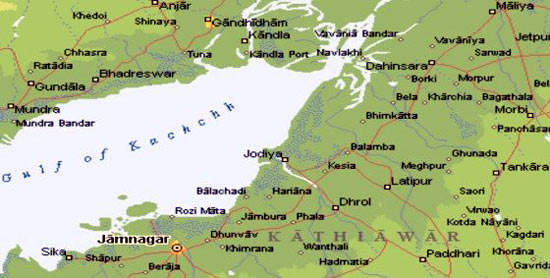
Guru Gobind Singh Refinery (GGSR) project in Bhatinda, in the Punjab region of India, has been undertaken to boost India’s refined hydrocarbon product capacity. With crude oil prices continuing to rise, India needs to be able to produce enough refined fuel products for the domestic market and, as in other Asian countries, have enough capacity for exporting.
In August 2007, the Punjab government put the long-delayed Guru Gobind Singh refinery project at Bhatinda back on track by signing a deed of assurance with main contractor Hindustan Petroleum Corporation Limited (HPCL). The nine-million-ton refinery had been on the drawing board since 1999 and, with the signing of the deed, HPCL began the groundwork at the project site.
The then Petroleum Minister Mani Shankar Aiyer ruled out shifting the project from Punjab to a new site in Rajasthan because INR3bn ($80m) had already been spent on the project. In addition, the state government had promised financial incentives for the project.
The refinery came online in March 2012 and required an investment of $4bn. The refinery will produce polypropylene, pet coke, sulphur, aviation turbine fuel, hexane, naphtha, mineral turpentine oil, motor spirit, kerosene oil, liquefied petroleum gas and high speed diesel. Products from the refinery will be moved out in three ways – via pipeline (from Bhatinda to Udhampur), road and rail.
History of the Punjab Guru Gobind Singh Refinery for hydrocarbon production
Originally, the Guru Gobind Singh Refinery was to be set up under a joint venture between Saudi Aramco and the Punjab State Industrial Development Corporation (PSIDC), with each holding 26%. However, Saudi Aramco withdrew to team up with Shell for a separate downstream venture.
PSIDC then approached ExxonMobil of the US. Two other refineries were underway: RIL’s 27mtpa refinery at Jamnagar and Essar Oil’s 12mtpa refinery at Vadinar. Also, Petronet India planned a 2,290km cross-country pipeline to cater to north and central India. ExxonMobil believed there was no market and withdrew in February 1999.
Leading companies such as Petronas and Birlas were not interested in partnering with HPCL on the project. BP had been involved in the project, but dropped out in June 2006. HPCL intended to complete the project without any foreign involvement. However, Mittal Energy had been given clearance to invest in the project.
HPCL and Mittal Energy Investment formed a joint venture called HPCL-Mittal Energy (HMEL) to design, construct and operate the refinery. The joint venture holds a 49% stake in the project while the other two percent is held by Indian financial institutions.
High number of backers for the $1.5bn financing deal
In July 2007, a $1.5bn financing deal was closed for the refinery at Bhatinda. SBI Capital acted as financial adviser and initial lead arranger in the financing, bringing a consortium of 25 banks and the Life Insurance Corporation together.
The lenders comprise of: Allahahad Bank, Andhra Bank, Bank of Baroda, Bank of Maharashtra, Canara Bank, Central Bank of India, Corporation Bank, Indian Bank, Life Insurance Corporation, Oriental Bank of Commerce, Punjab National Bank, Punjab and Sind Bank, State Bank of Bikaner & Jaipur, State Bank of Hyderabad, State Bank of India, State Bank of Indore, State Bank of Mysore, State Bank of Patiala, State Bank of Saurashtra, State Bank of Travancore, Syndicate Bank, The Federal Bank, Union Bank of India, United Bank of India, UCO Bank and Vijaya Bank.
Construction and infrastructure led by HPCL-Mittal Energy (HMEL) JV
The refinery houses an atmospheric distillation unit, a delayed coker, a fluidised catalytic cracker, a vacuum distillation unit, a continuous catalytic reformer, a diesel hydro-treater unit, a vacuum gas oil – hydro-treater unit, a sulphur recovery unit and a 165MW captive power plant.
HPCL acquired 2,000 acres of land for the refinery project in September 1998 at a cost of $12.5m. The construction involved 48 contractors and package vendors. The project and associated infrastructure facilities required 17,000 contract employees during peak construction.
An 18km-long approach road was built between the Bhatinda-Dhabwali road (NH-64) to the refinery site. This was built under the supervision of the Punjab PWD at a cost of $4.5m on a 50:50 cost-sharing basis between GGSR and the Government of Punjab. A 12km-long water canal has also been laid to the refinery site at a cost of $1.4m.
IBM was selected to provide a manufacturing execution system for the refinery. PSEB also installed hardware to supply power during the construction period. An operational area of approximately 1,600 acres was levelled and graded. The project includes facilities for fire-fighting, effluent treatment and product despatch covering 350 acres.
Developments for the Guru Gobind Singh Refinery (GGSR) project in Bhatinda
HPCL has also set up a petrochemical unit producing polypropylene at the Bhatinda refinery complex. The petrochemical plant will help add economic value to the refinery, enabling it to produce LPG, naphtha, kerosene and diesel.
To supply crude to the refinery, HPCL built a 1,017km pipeline from Mundra, Kachchh district, Gujarat, to Bhatinda, running through the states of Gujarat, Rajasthan and Haryana. About 310 acres of land was acquired for the crude oil terminal at Mundra.
ABB Lumus of the Netherlands carried out the detailed feasibility report on the pipeline and the project received Cabinet Committee on Foreign Investment clearance in 2002.
Engineers India was then appointed as the project management consultant for the construction of a single point mooring, crude oil terminal at Mundra (Gujarat coast) and the cross country crude oil pipeline. Competent authorities for acquiring Right of Use in the states of Gujarat, Rajasthan and Haryana were appointed. Toyo India was the contractor for the sulphur recovery plant.



